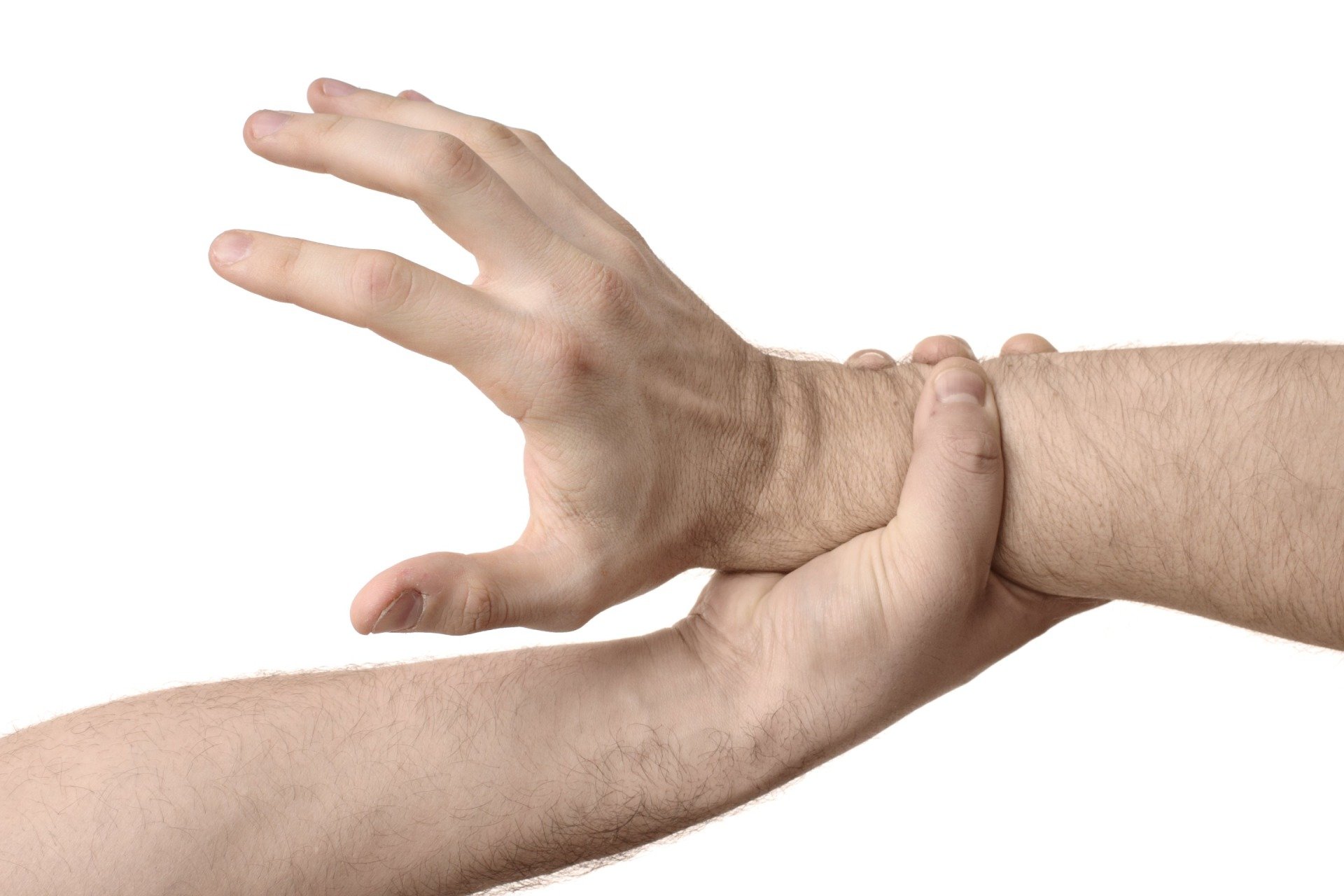What is ‘Self-Defence’?
Colin Ellis-Vowles
All too often I have heard various misconceptions about the term ‘self-defence’ and what does and does not constitute a legally accurate and a fit for purpose description of this term.
I have heard people at one extreme say “He hit me first so I hit him back; it’s self-defence” through to the other extreme of “You can’t do anything by law if a pupil attacks you or it will be assault against a child”. Both of these extremes are incorrect and incredibly dangerous for varying reasons as you will soon find out. I aim to not only explain what self-defence is but also give you the tools with which to look at other instances of self-defence or use of force so you can judge for yourself if the force was legitimate or assault.
Before we look at these examples, we first need to understand what ‘self-defence’ actually is and if indeed, we are allowed by law to defend ourselves.
Well, quite obviously we are all allowed to defend ourselves when faced with an attacker or violent situation and this is provided by Common Law. ‘The lawyers' practitioner’s text (Archbold 19-41)’
states:
"It is both good law and good sense that a man who is attacked may defend himself. It is both good law and good sense that he may do, but only do, what is reasonably necessary."
At COVIC Training Solutions we define use this definition when teaching self-defence:
“The defensive use of physical force for the purpose of preventing an actual or imminent threat of unlawful violence against the person with the aim of creating a window of opportunity to escape the threat”
Section 3 Criminal Law Act 1967 (1)
states:
“A person may use such force as is reasonable in the circumstances in the prevention of crime, or in effecting or assisting in the lawful arrest of offenders or suspected offenders or of persons unlawfully at large.”
Ok, that’s great! The law has said we can defend ourselves, but what do ‘reasonably necessary’ and ‘reasonable force’ actually mean? Well, let’s see what the courts say. In assessing the reasonableness of the force used, prosecutors generally ask two questions:
Was the use of force necessary in the circumstances, i.e. was there a need for any force at all?
and
Was the force used reasonable in the circumstances?
The courts have indicated that both questions are to answered on the basis of the facts as the accused honestly believed them to be (R v Williams (G) 78 Cr App R 276), (R. v Oatbridge, 94 Cr App R 367).
If we look at those questions individually, the important part of the first question is the word ‘necessary’. In other words, was force the only option the defendant had to ensure their own safety? Could they have withdrawn from the area? Could they have resolved the situation with effective communication? Was their only exit blocked? How violent or aggressive was the assailant?
If a person has no other option but to use force to ensure their own safety, in the circumstances as they see them at that point in time, there is a very strong case for force to have been necessary.
Ok, so what is reasonable force, as mentioned in Section 3 Criminal Law Act 1967? ‘Reasonable’ is a bit of a subjective words isn’t it? What is reasonable for one person could be very different for another. Well, quite frankly yes it is, very subjective, however there is a simple way of clarifying what is reasonable force.
One must look at the level of damage or injury that would likely have occurred if force was not used, and balance it against the damage or injury caused in the prevention of that crime.
For instance, I’m about to be assaulted by a man of similar build and weight to my own without any weapons. If I pick up an iron bar and hit him over the head with it, this is excessive force. The damage he is likely to do to me if I don’t use force doesn’t compare to the damage I would do to him by using an iron bar. The force is disproportionate. I am risking his life when there is little or no threat to my own.
If, however, he pulls a knife out and I genuinely believe he is going to use it and my life is in imminent danger, is it potentially proportionate in this instance to use an iron bar in my own defence? My life is in danger from the knife. I could feasibly kill my attacker with the iron bar, but if I don’t do something I could well end up being stabbed and being killed. With the latter example, it would be much easier to claim self-defence as there is risk to my life if I do not act, balanced against the risk to the assailant’s life if I do.
The threat level to me at this level is significant. Consider how much higher would the threat level be if I were a young female, 5’6”, weighing approximately 9st and my attacker was a mid-40’s male, 6’2” and weighing approximately 16st? Would it be reasonable to expect the female to wait for a knife to be pulled before using an iron bar? It could be argued that due to the massive difference in size, weight and strength that the female could use much higher levels of force when protecting herself due to the increased level of potential damage if she sustained any blows.
When discussing reasonable force, I like to use simple formula like this:
Necessary + Proportionate = Reasonable
Life threatening and highly severe self-defence is provided by law but only if it can be suitably justified and proved that without prejudice, the action taken was the only option available at that time. This level of force can only be employed when absolutely necessary and must be strictly proportionate:
".... where a forcible and violent felony is attempted upon the person of another, the party assaulted, or his servant, or any other person present, is entitled to repel force by force, and, if necessary, to kill the aggressor ....".
If we refer back to the example where I’m being threatened by an armed man, my life is in danger but I can’t just take the attackers life. I do have other options. I have an iron bar but I can strike the attackers arm, breaking it and making him drop the knife. The force is proportionate but I’ve not taken the attacker’s life and the level of force used is more easily defensible.
"If there has been an attack so that the defence is reasonably necessary, it will be recognised that a person defending himself cannot weigh to a nicety the exact measure of his necessary defensive action. If a jury thought that in a moment of unexpected anguish a person attacked had only done what he honestly and instinctively thought was necessary that would be most potent evidence that only reasonable defensive action had been taken."
That last quote basically means that in some instances the defendant can’t be expected by the court to have weighed up and thought through every option available before acting in self-defence. This provides for genuine cases where excessive force is used by the defendant, but the circumstances of the incident prevented the defendant from being able to weigh up all options. The key to this again is justification of actions by demonstrating the level of perceived threat.
So when we look at the first examples of people’s perceptions of self-defence again, we can see that both extremes are incredibly flawed. Recently there was a case of a Police Officer assaulting a prisoner
for spitting in his mouth, claiming that he thought the prisoner was going to spit again. The questions I would ask are:
- ‘Why didn’t you step back out of spitting range?’
- ‘Was the act of striking the prisoner in the face, causing enough damage to create a pool of blood in the van proportionate in damage or injury to a being spat in the face?’
Using the formula above we can see that force was not necessary as the Officer could possibly have backed out of spitting distance. Was the punch to the face proportionate? No, of course it wasn’t. I have no doubt the Officer was quite rightly angry at the prisoner, but this isn’t suitable reason to use that level of force. This action is more commonly known as retaliation or revenge; not self-defence.
So when does genuine self-defence become assault? Can it become assault? Well, in short, yes it can. We only have a legal right to use force against another while there is a genuine perceived threat to our safety. Once that threat has gone or has been eliminated, we no longer have the right to use force. Similarly, the level of force one can use will differ in relation to the presented threat.
For instance, if I’m being threatened by a man with a knife and I genuinely fear he is going to kill me, I am well within my rights to use enough force to remove that threat. That isn’t necessarily strike him with the iron bar on the head as previously mentioned. I could instead strike him on the arm that is carrying the blade. Would that not eliminate the threat of being stabbed as he drops the knife? He may well suffer a broken arm, but the threat of being stabbed has now been eliminated. If I then begin to attack him further with the iron bar, I now become the aggressor. This is because the threat level to me is now greatly diminished, but the level of damage I would cause is disproportionately higher making the level of force illegal and therefore assault. When using force we must always reduce the level of force in line with the reduction of perceived threat.
So, in summary; yes we can defend ourselves provided the force is necessary and the force is proportionate to the damage or injury likely to be sustained if we don’t act, regardless of gender, age or any other demographic. As long as there is a threat to our safety, we are able to use proportionate force to eliminate that threat. Once the threat has been negated, force is no longer an available option.
I hope this helps to clear up any misunderstanding surrounding what ‘self-defence’ actually means in law.
If you would to discuss this further then by all means send me a message.
Colin Ellis-Vowles
Keeping People Safe

I have said before that restraint is very often shrouded in misinformation, misinterpretation, and grey areas and is an especially emotive subject when it involves children. This can easily lead to decision makers making incorrect, and even dangerous choices when creating well intended provisions for the safety of pupils and staff. But this is not an isolated reason why we have seen unprecedented attention within the media reflecting a growing concern about restraint in schools. Mismanagement is generally a result of systematic failings as opposed to finding a single cause. Recently, the Equality and Human Rights Commission announced they would be launching an inquiry into schools’ use of restraint on pupils . Now, please excuse the sub-title of this piece, but I truly hope the investigation is thorough and shines a massive light on the realities of restraint in schools not only for the pupil but also to reflect the physical and emotional cost for both teachers and senior managers. A Reactive Culture There seems to be a reactive culture when addressing restraint in schools. It is often the case that management will only acknowledge the requirement of positive handling training after they are faced with violence. But by this point, the damage is already done. The child is mismanaged, and staff are put in the untenable situation of not being fully equipped to manage the situation safely. In short, everyone’s physical and emotional well-being are being put at risk. Towards a Proactive Culture But would it not be better to proactively prevent these incidents in the first place? It is very rare that an individual child will demonstrate behaviour that has made restraint necessary without warning and danger signs. Additionally, the vast majority of children who have been restrained within schools have been restrained on a number of occasions, and if recorded properly, these incidents will usually have a common pattern of behaviour and distinct triggers. If we are aware that a child is a risk to themselves or others, we have a legal obligation to carry out a risk assessment (yes, I’m banging that drum again) that should be carried out specific to that individual child. Why is this important? Central to all restraint policies should be ways to reduce the incidents of restraint and so maximise the safety of pupils and staff. How do we do that? We reduce the need for restraint by recognising common patterns in behaviour, or changes in a child’s environment that we know is likely to cause a downward turn in that child’s conduct. This information can feed into a Positive Behaviour Support plan, thus aiding us in proactively managing a child and their experiences. Furthermore, there is actually a legal requirement for schools to have adequate reporting procedures in place should any level of force be used against a child. How do we know what these triggers are? We are in a better position to understand challenging behaviour when we can unpack the circumstances in which it arose, but we can only do that with accurate reporting of incidents and information sharing. We might ask ourselves the following questions; What was the build up to this incident? What happened? Where did it happen? When did it happen? What did you do? Why did you take that course of action? This helps build a picture of the entire incident through the eyes of the staff member in question. Legally speaking, this is exactly how a person’s actions are judged. By collating a number of reports, it becomes easier to identify patterns in behaviour, environmental impact on the child at each incident, if a specific individual is the cause for certain types of behaviour and so on. The need for information sharing The sharing of positive behaviour support plans and risk assessments is vital to ensure the safety of the pupil and others that may work with that pupil on a day to day basis. If we keep the information recorded but locked in a filing cabinet, we might just as well have not done the risk assessment in the first place because the frontline staff are not aware of it. A teacher I had a discussion with recently had been assaulted by pupil that had been transferred from another school and had a risk assessment and care plan specific to him. Unfortunately, the teacher in question had not been made aware of the care plan or risk assessment relating to the child, so she treated him as she would every other child in her class. Once the incident with the child had been resolved and the related investigation had begun, only then did she find out about the care plan and risk assessment. When she asked why she had not been told about these documents, she was told it was for “data protection purposes”. Had she been privy to this information, she would have probably managed the incident as per the care plan had she known about it. How could she be expected to follow the preferred methods enshrined in the document if she wasn’t made aware of them? It stands to reason the assault on the teacher, and the anguish the child went through could possibly/probably have been avoided if the details of the care plan had been made available to her. Although this is just one example, I have been given a whole range of reasons why information sharing was withheld. One that stands out was how there was a belief that a pupil had moved to a new school for a ‘fresh start’ and therefore a care plan wasn’t necessary. This one for me is hugely negligent, both on the behalf of the staff but also the pupil. By all means, allow the pupil a new beginning, but the responsibility to safety has not diminished in anyway, and until it can be suitably demonstrated the challenging behaviour no longer poses a threat, the risk assessment should stay in effect. Justifying your actions to others Reporting is not just about informing risk assessments or positive behaviour support plans. A robust reporting mechanism is powerful tool to collate evidence to underpin why as a teacher, you responded in a particular way, and the decision-making process behind that action. Technically, if we restrain an individual we are assaulting them and restricting their liberty, which is a breach of their human rights. Now, provided we can justify our actions we have a suitable legal defence and no charges relating to the ‘assault’ should be brought. Avoiding the ‘it’s your word against theirs’ So, how can we ensure this justification is communicated clearly to those with a vested interest? With the creation of an accurate and detailed report. To quote the old Police and HM Prison Service maxim, ‘if it ain’t written down, it didn’t happen’. In other words, if you don’t create a report of an incident, all sorts of allegations can be made, and it is ‘your word against theirs’. By writing a report you have created your evidence, your defence to your actions as seen ‘through your eyes’. Again, you are ‘painting a picture’ of what happened so that any reasonable person looking at it would likely respond in the much the same manner. Report writing also documents the particulars immediately after the incident. Most investigations and related legal cases occur many months, if not a couple of years after the incident, and as time passes it can get increasingly more difficult to remember exactly what happened and in what order. By recording the incident in a report, you have an aid to memory when it comes to explaining yourself during an investigation. Investigation?! Should I be worried? In short, no. An investigation is simply that; an investigation. A method of finding out the facts of any given subject. How can the facts relating to your actions be discovered during an investigation? By the use of a report… are you seeing a pattern here? Ok, you’ve banged the drum about reports. What can I do? We cover report writing in all of the restraint and positive handling courses we deliver. Alternatively, get in touch with us at COVIC Training Solutions and we can discuss what you need to do to create an accurate and detailed incident report.

I’m going to start this piece by saying I disagree with the Care Review and the related article in The National , and the concept of banning restraint, physical intervention, safe holds (insert preferred term here). Why is that? Isn’t finding an alternative to restraining an individual, whether it is a child or adult a much better outcome for all? Well, in an ideal world yes. Never having situations where restraint is the only viable option to keep an individual or other people safe would be fantastic. Service users would benefit as not many people like to be restrained. Staff would benefit as they would no longer have to put themselves in danger of physical injury by restraining a service user. Unfortunately in the real world, this simply isn’t the case, and here is why. Before we go any further, for the purposes of this article and the ease of writing, all physical intervention methods that involve the direct application of force to restrict the movement of an individual will be referred to as ‘restraint’. What about the risk assessment? Firstly, if an organisation, school, care facility has a restraint policy it should be informed by a risk assessment. That assessment will be a measurement of known and likely risks that an individual, or groups of individuals may pose to themselves or others. If that risk is present the organisation must, by law, implement all reasonable actions and measures to eliminate or reduce that risk. If the identified risks include violence, aggression, self-harm or any threat to the physical welfare of a service user or others, then appropriate measures must be put in place to prevent or reduce those risks. Secondly, if a risk assessment has been carried out and the risk of violence, aggression, self-harm etc. has been identified, but the organisation only goes so far in its reduction of risk to the point where those measures are not fit for purpose, the organisation is at risk of breaking the law. Low level strategies will only go so far in the management of aggression, and removing the option of reasonable force will raise the risk of harm to all. You can read more about risk assessments and risks to employees here. Would restraint reduction strategies work better? At COVIC Training Solutions, we are known as a leading training provider for restraint and personal safety training. That is a given. However, the bulk of what we actually teach could be described as ‘restraint reduction’ strategies such as conflict management, positive behaviour support, and effective communication techniques. Why? Because it has been proven time after time that strategies such as these significantly reduce the number of incidents an organisation may experience. Furthermore, the ethos of any given organisation has a huge impact on the mind-set of its staff. Ultimately it is right that we do all in our power to NOT use force . With that said, we must also prepare to have to use force if a particular situation makes it a necessary option. Does the Care Review raise important issues? The report from the Care Review raises some very salient points, particularly around the use of restraint as a form of abuse and/or punishment. I completely and unreservedly agree with the Care Review on this. Restraint should NEVER be used as such, and should only be used in the prevention of harm. The Care Review also highlights a few techniques that potentially increase the risk of harm during an incident. Again, I completely agree with their findings. So should restraint be completely banned? Absolutely not! There are many restraint packages available, and some are better than others, but those that are worth their weight in gold are those that work and are safe. A simple analogy that works for me is ‘cars have killed many people so we should ban all cars’. Is this a reasonable measure? Of course it isn’t. The need for transport is still there. The need for people and businesses to get around the country hasn’t gone away, and the same can most certainly be said about the risks some service users pose. Banning restraint doesn’t reduce the risk. Is the Care Review keeping people safe? In short, if the Care Review can guarantee carers, and anyone working with service users will not be put at risk by aggression and violence from service users, and never have to manage incidents of self-harm, then I will be at the forefront of having restraint banned in all organisations, and will then have to find another job. Until then, I will continue to train staff in safe, appropriate, and effective methods of restraint alongside actively promoting methods of how to minimise the need for it. A final thought… Let’s consider the ramifications on the carer/teacher/someone in charge of a young person. If a service user physically attacks a carer , teacher, member of staff and that staff member fears for their life and uses reasonable physical force to stop the assault from continuing, should that carer be punished? Should they lose their job? I’ll take that thought further. The carer has been told restraint is no longer an option so the carer decides their only option to protect themselves is to strike the service user. Again, should the carer be punished? Should they lose their job? Are the Human Rights of the carer not as important as those of the service user? Should carers just expect that their life is put on the line when giving care?

Safeguarding in schools is and will always play a vital role in preventing harm. Reflecting on recent news highlighted the seemingly common occurrence of getting the basics wrong. This blog considers how governmental guidance, adequate risk assessment and policy writing underpins good safeguarding practice.

I recently spoke to a Door Supervisor who operates in a city in the Midlands, exchanging stories of our experiences and working practices. I asked him about the use of handcuffs by Door Supervisors in the city and in particular how Police Officers reacted to Door Supervisors carrying cuffs. He explained that handcuffs are not allowed by private security personnel in the city and Police Officers confiscated cuffs from Door Supervisors. Worryingly, he explained that one Saturday night while on duty a Police Officer confiscated his cuff key, used to lock and unlock the cuffs, leaving him with just the handcuffs. Later that evening a Police Inspector confiscated the handcuffs explaining that only Police Officers were allowed to carry and use handcuffs. Is this the case? Are only Police Officers and those involved in law enforcement allowed to carry and use cuffs? In short, no. Technically you and I as civilians are, by law, allowed to carry and use handcuffs. However, before you rush out and buy a set ‘because Colin from COVIC said so’, there is a mass of information you need to understand first. Ultimately you need to be trained in the reasonable use of handcuffs and they need to be of serviceable and fit for purpose quality. Ideally you would also be trained in restraint as this is good practice and you will understand the concepts of reasonable force. A handcuff training course not only teaches you how to apply cuffs, but also the underpinning legislation in relation to their use, some of which we will look at now.

I recently received an amusing email from a friend that spoke about an experiment involving a number of monkeys, a ladder, some bananas and a cold shower. After reading the email and agreeing with its sentiments, I realised that it struck a chord with me and I couldn’t shake off the message it conveyed. I conducted a little research into the alleged experiment to find that it did actually take place back in 1967 as an experiment into ‘mob culture’. The experiment goes along the lines of a group of scientists placed 5 monkeys in a cage. In the middle was a ladder with bananas at the top. Every time a monkey went up the ladder, the scientists showered all of the monkeys with cold water. After a while, every time a monkey went up the ladder the other monkeys beat him up. After some time no monkey dared climb the ladder, regardless of the temptation. The scientists decided to substitute one of the monkeys. The first thing the new monkey did was climb the ladder to get the bananas. Immediately the other monkeys beat him up. After several beatings the new member learned not to climb the ladder, although never knowing why. The second monkey was substituted and the same occurred. The first monkey participated on beating the second monkey. A third monkey was substituted and the same was repeated. The fourth was substituted and the beating was repeated, and finally the fifth monkey was replaced. What was left was a group of 5 monkeys that even though never received a cold shower, continued to beat up any monkey that attempted to climb the ladder. If it were possible to ask the monkeys why they beat up all who attempted to climb the ladder, I bet their answer would be: “I don’t know, that’s how things are done around here”. Now I’m fully aware that we’re discussing monkeys and we’re human beings and as such we’re obviously far more evolved, developed and intellectually advanced than our genetic cousins… but just how much more advanced are we in our rationale and thought processes? In 2004, Edgar Schein discusses “unconscious, taken-for-granted beliefs, perceptions, thoughts and feelings. The ultimate source of values and action” (Schein, 2004). This is the element you see or experience but it is difficult to understand ‘the why’. Often these assumptions conflict with the ‘values’ promoted on posters and intranets or discussed in inductions. For instance, a healthcare organisation is extremely proud of their strong culture and ethos of caring for patients. From their new employee induction and orientation program to their performance management program, everything focussed on caring, quality and more importantly for this example, speaking up when they saw something wrong. Several years ago, a new nurse just out of induction publicly corrected a physician and was openly “flogged” in front of colleagues, patients and superiors. That nurse later became a mentor to several other nurses, and quickly explained that what they learned in orientation about speaking up was a bad idea, and they would actually be subject to disciplinary action if they challenged a physician or a more senior nurse. Year after year, the unspoken rule is handed down and the energy and excitement of hearing the values at induction gives way to cynicism and silence. The same occurs within the realm of understanding reasonable force and its application. All too often I have heard staff within care homes, schools and hospitals tell me that it is illegal to use physical force to prevent someone harming themselves or another. It is assault to use physical force to use force to protect oneself from attack, particularly if the assailant hasn’t actually struck first. However, when I have asked the usual question “Who told you that?” the response is usually a manager, a supervisor or another colleague. Quite often they cannot remember who told them; however, they perpetuate the myth based on misinformed assumption through ‘the ranks’. The result? Reduced morale, staff feeling unsupported and more importantly, staff feeling unsafe and even scared. Don’t be the monkey! Get informed, do your own research and ask questions. Information is readily available from a wide variety of sources including the internet, the Government legislation website, and industry specialists like the team at COVIC Training Solutions.

The Metropolitan Police Service has launched new policy stating that it will no longer respond to calls from psychiatric units where staff require help restraining patients, unless there is significant threat to life or limb. This is in effort to reduce the workload on Met Police, allowing them to tackle crime more efficiently. NHS senior managers and staff are greatly concerned of the increased risk to staff and patients without the presence of Police Officers during restraint incidents. Why? Yes, that’s correct; I’d like to know why? Before I justify the question, let me ask a couple of my own…

Dudley hospitals deny 'unlawful restraint' of patients Staff at an NHS Trust in the Midlands have been accused of unlawfully restraining patients , including a 14 year old child. The allegations are thought to have been made by the Trust’s former head of security, but the claims are denied by Trust Chief Executive Paula Clark.

Prosecutions under Section 37 of the Health & Safety at Work Act 1974 have increased by 400% in the past 5 years. In real terms that equates to 30 - 40 Directors and managers being prosecuted in the UK each year. As of the 1st October 2012 the HSE were able to charge for all investigations and follow up work until a prosecution is commenced. They will charge £124 per hour unless 'specialist input' is required, which will incur an additional charge. Furthermore, if someone were to die as a result of a breach of a duty of care owed to them, then the organisation and it's senior management could be prosecuted under the Corporate Manslaughter & Corporate Homicide Act 2007 , which could result in a senior manager, director or company owner going to prison. The starting fine for an organisation found guilty of a Corporate Manslaughter charge is now £500,000. Lastly, Corporate Manslaughter Prosecutions were up 40% on the previous year according to recent press releases. Furthermore, there have been 141 Corporate Manslaughter cases opened since records began in 2009, and at last count there are 56 cases currently being investigated for prosecution.


